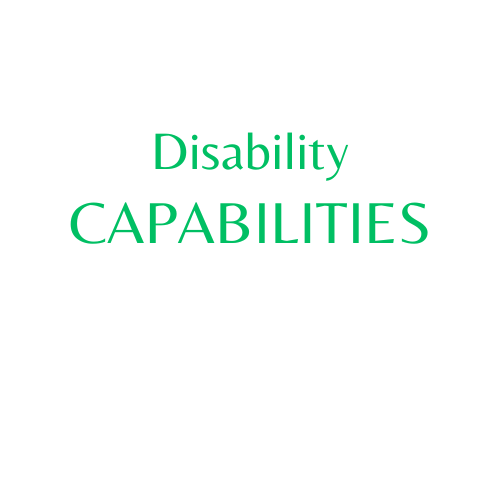Three Levels of Discapability that Limit the Outputs of Disabled & Neurodivergent Persons: Abnormalizing, Problematizing, Exclusion

Disability rights and inclusion have come a long way in the past decades. However, for the most part, disability rights were granted from a position of pity, which reinforced stereotypes of weaknesses among disabled and neurodivergent persons[1]. As a matter of fact, disability rights are often eroded because of the failure to recognize and safeguard the full participation of neurodivergent and disabled persons. Most systems and structures in modern states actively exclude disabled and neurodivergent persons in three stages – abnormalization, problematization/pity, and exclusion.
Abnormalization of Disabled and Neurodivergent Persons
Aspects of human nature tend to split things and people into two – good and bad[2]. This is what makes us who we are as human beings. Some experts assert this is a stage of the evolution and development of every individual. However, society needs to be much more accommodating to gain the best of all its people.
In reality, there is a sociological tilt towards an opinion of the “ideal specimen” and the “deviant”[3]. This is steeped in the notion of inherent “goodness” and “badness” linked to certain people[4]. These ideas are deeply rooted in the human and driven by our perceptions and views.
However, in modern states, a simplistic view of specific people creates a problematic abnormalization process if it culminates in barriers to people’s ability to meet their greatest potential.
Social and cultural differences lead to inequalities in accessing developmental and productivity possibilities in a given economy or jurisdiction. Furthermore, the lack of knowledge about neurodiversity tends to lead to narrow labeling abilities that deepen the limitations linked to abnormalization of neurodivergent people.
Evidence-based studies almost always point to the fact that persons cast as “abnormal” tend to have the same and sometimes superior functionality in observable skillset[5].
Thus, abnormalization on its own, becomes an external projection placed on the path to a neurodivergent person’s pursuit of the fullest capabilities.
Problematization and/or Pity
Under the mask of abnormalization are “pity” and “problematization”, which often lead to the concretization of the barriers on the path of a neurodivergent person.
Obviously, the decision of a board not to hire a particular candidate could be based on many things. In many cases, problematization is the undocumented element of the reason to block opportunities and possibilities for abnormalized persons – legally.
In fact, most of the disability laws around the world cannot be invoked to challenge problematization and pity. However, we all know that many neurodivergent persons might never get to the point of putting together a neat CV to get a job. Many might present themselves in ways that might be seen as anything other than ideal.
People create others in the images of things they “fear” or “glorify”[6]. While we may deny it, many people will want to view others in the lens of celebrities. Thus, if a person looks like Julia Roberts or Brad Pitt, they are likely to be accorded vicarious positive treatments. At the same time, if a person looks like a hated villain, they are likely to be avoided.
In the past few decades, the concept of “medicalization” has caused us to pathologize and problematize many behavioral and psychological issues as “deviant”[7]. Many ideas that are not recognized officially on clinical psychology scales are considered a symptom of some psychological or behavioral disorder. This is deeply ingrained in people’s minds and in reality, they become barriers to persons who tend to be different.
Even if a neurodivergent person has a genius-level potential to yield optimal results, problematization can leave their competencies untapped for many years. However, there are many neurodivergent support networks that have been able to help persons who to develop significant startups and entities.
Exclusion – The 21st Century Version
For practical reasons, most bureaucratic systems are built on the assumption that “neurotypical” persons are likely to work in the system.
Many disabled persons develop a modified view of the world. Neurodivergent persons are therefore not central to most work and business structures.
In many social and cultural settings, neurodivergent persons are likely to be kept away from the economic value generation system altogether. Thus, exclusion remains a major problem in our times.
Exclusion is inherent in many forms including:
1. Recognition, development, and optimization of neurodivergent persons’ competencies, and
2. The problematization, limitation, and sometimes criminalization of persons with neurodivergent behavioral issues[8].
While this might lead to a notion of meeting the greatest and best outcomes in a given socioeconomic jurisdiction, it excludes persons with neurodivergent abilities who bring on neuro-compensatory competencies to improve and enhance the work process and system[9]. This is because neurominorities tend to spike up the work environment and create a balance that ultimately causes the team to do better[10]
In conclusion, the abnormalization of neurodivergence creates inherently exclusive systems. Bureaucratic structures support neurotypical persons, with little to no room for neurodivergent persons and neurominorities. Despite this, the system covers up politely and tends to feel sorry for these excluded persons while they struggle with an artificial discapability created by a structured process.
Way Forward
1. Evidence-based analysis of existing systems must be undertaken. This should lead to the restructuring of jobs and socioeconomic systems. In this sense, society will have to rethink its recruitment processes, job requirement definitions, person specification, and tasks.
2. Technology has a role to play in creating new mechanisms of allowing people to work remotely and also apply themselves in the optimal way.
3. Interventional psychology should not be limiting. Rather, it should aim at empowering neurodivergent persons.
4. Capability-driven labor integration driven by specialization can be developed carefully to enhance the contributions of neurominorities.
By: Sam Yeboah
[1] Howard Sklar. ""What the Hell Happened to Maggie?": Stereotype, Sympathy, and Disability in Toni Morrison's "Recitatif"" Journal of Literary & Cultural Disability 5 (2) pp137-154
[2] Gilman, Sander L. Difference and Pathology: Stereotypes of Sexuality, Race, and Madness (Cornell. University Press, 1985) p17
[3] Elizabeth Ewen & Stuart Ewen. Typecasting: On the Arts & Sciences of Human Inequality: a History of Dominant Ideas. (New York City: Seven Stories Press, 2006)
[4] Gilman, Sander L. Difference and Pathology: Stereotypes of Sexuality, Race, and Madness (Cornell. University Press, 1985) p17
[5] Elizabeth Ewen & Stuart Ewen. Typecasting: On the Arts & Sciences of Human Inequality: a History of Dominant Ideas. (New York City: Seven Stories Press, 2006)
[6] Gilman, Sander L. Difference and Pathology: Stereotypes of Sexuality, Race, and Madness (Cornell. University Press, 1985) p15
[7] Peter Conrad, The Medicalization of Society (Baltimore: Johns Hopkins University Press, 2007)
[8] Lauren Lestremau Allen, Leanna Mellon, Noor Syed, Joy Johnson, & Armando Bernal. "Neurodiversity-Affirming Applied Behavior Analysis" SI: Compassion in Applied Behavior Analysis 2024
[9] Tania Parasin-Lavin, Trinidad Garcia, Amanda Abin & Celestino Rodriguez. "Neurodivergent students. A continuum of skills with an emphasis on creativity and executive functions" Applied Neuropsychological Child 2024
[10] Nancy Doyle. "Neurodiversity at work: a biopsychosocial model and the impact on working adults" British Medical Bulletin 135 (1) 2020 pp108-125





